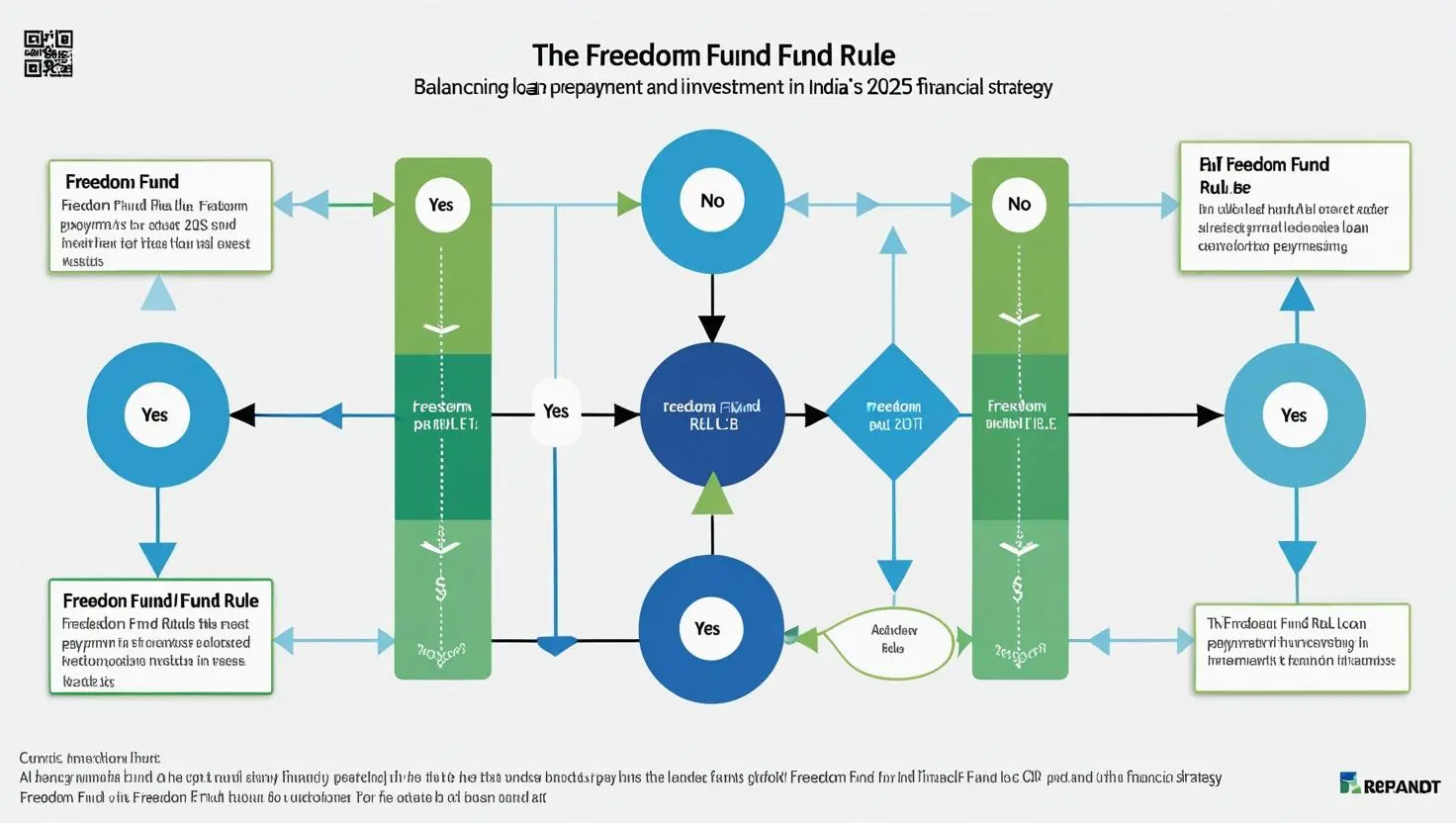7Critical Truths About Prepaying Loans vs. Investing in India for 2025
Have you ever felt trapped by monthly EMIs, wondering if you’ll ever be financially free? If you’ve received a bonus or increment, you’ve likely faced the dilemma: should you prepay your loan to reduce debt or invest to grow wealth? This decision can feel like choosing between two paths—one promising quicker relief from debt, the other offering long-term financial growth. In this guide, we’ll uncover seven critical truths about the prepay loan vs. invest dilemma, tailored for Indian salaried professionals. You’ll learn how to balance EMIs and investments, avoid costly mistakes, and take actionable steps toward financial freedom in 2025.
What is the Prepay Loan vs. Invest Dilemma?
The prepay loan vs. invest decision is about choosing how to use extra money—like a salary hike or bonus. Should you reduce your loan’s principal to save on interest, or invest in assets like mutual funds or stocks to build wealth? Think of it like a tug-of-war between two goals: reducing financial stress today versus securing a wealthier tomorrow. For instance, imagine Priya, a Bengaluru-based IT professional with a ₹40 lakh home loan at 8.5% interest. When she gets a ₹10,000 monthly increment, she wonders: pay down her loan faster or start a Systematic Investment Plan (SIP)? This choice affects not just her bank balance but her peace of mind.

Why Should You Care About Prepay Loan vs Invest Decisions?
This decision shapes your financial future—both emotionally and economically. Paying off a loan early can free you from the stress of EMIs, giving you a sense of control. Conversely, investing can compound your wealth, helping you achieve goals like retirement or a child’s education. Consider Priya’s case: if she prepays her ₹40 lakh home loan with ₹10,000 monthly, she could save ₹17.6 lakh in interest over 20 years. But investing that amount in an SIP at 11% CAGR could grow to ₹72.3 lakh by the end of the loan term. The choice isn’t just about numbers—it’s about balancing security and ambition. Poor decisions here could mean years of financial stress or missed wealth-building opportunities.
5 Key Factors to Consider When Deciding to Prepay or Invest
Here are five critical factors to weigh, derived from analyzing loan and investment dynamics:
1. Loan Interest Rate vs. Investment Returns
The interest rate on your loan is a guaranteed cost, while investment returns (like 11% CAGR from Nifty) are not. If your loan’s interest rate (e.g., 8.5% for a home loan) is lower than potential investment returns (e.g., 11%), investing might seem attractive. But high-interest loans (above 15%, like personal loans) often make prepayment the smarter choice.
2. Loan Tenure and EMI Structure
Early in a long-term loan, most of your EMI goes toward interest, not principal. For Priya’s ₹40 lakh loan, her ₹34,700 EMI includes ₹28,300 interest in the first year, leaving only ₹6,400 for principal reduction. Prepaying early cuts the principal directly, saving significant interest.
3. Sequence Risk in Investments
Market returns aren’t steady. The Nifty’s average CAGR is 11.7%, but years like 2008 saw negative returns. If you invest during a market downturn, your returns could be as low as 3–4%. Prepaying a loan, however, guarantees interest savings, making it a safer bet during volatile markets.
4. Your Financial Goals
Are you prioritizing debt freedom or wealth creation? If EMIs strain your monthly budget, prepaying can ease cash flow. If you’re planning for long-term goals (e.g., retirement in 20 years), investing might align better.
5. Emotional Impact of Debt
Debt can feel like a “pindra” (cage), as one perspective in the script notes. Reducing it can boost your mental peace, while investing might feel empowering but risky. Your personality and risk tolerance play a big role.
How to Balance Prepayment and Investment (Step-by-Step)
What if you could save lakhs on interest and grow your wealth at the same time? The “Freedom Fund Rule” suggests splitting your extra income between prepayment and investment. Here’s a step-by-step plan:
- Assess Your Loan’s Interest Rate: If it’s above 12–15% (e.g., personal loans), prioritize prepayment. For lower rates (e.g., home loans at 8–9%), consider splitting.
- Calculate Potential Savings and Returns: Use a loan EMI calculator to estimate interest savings from prepayment. Use an SIP calculator to project investment growth at 10–12% CAGR.
- Adopt a 60/40 Split: Allocate 60% of extra income (e.g., ₹6,000 of a ₹10,000 increment) to prepay your loan and 40% (₹4,000) to an SIP. Adjust based on your risk tolerance.
- Account for Step-Ups: If your income rises (e.g., 10% annually), increase your SIP or prepayment contributions proportionally.
- Reevaluate Annually: Check market conditions and your loan balance yearly to adjust your strategy.

Managing your finances is like driving a car—you need to balance the accelerator (investing for growth) and the brakes (prepaying to reduce debt) to reach your destination safely.
Common Mistakes to Avoid When Deciding to Prepay or Invest
Steer clear of these pitfalls to make smarter financial choices:
- Ignoring Sequence Risk: Don’t assume markets will always deliver 11% returns. A bad market sequence (like 2008–2015) can shrink your investment, while loan interest is a sure cost.
- Over-Prepaying Without Emergency Funds: Prepaying all extra cash can leave you strapped if emergencies arise. Always maintain a 6-month emergency fund before aggressive prepayment.
- Investing Without Research: Jumping into SIPs based on tips (like WhatsApp group “hot stocks”) without understanding risks can lead to losses.
What’s your biggest financial priority right now—reducing debt or building wealth? Share in the comments!
Final Thoughts + Call to Action
Deciding whether to prepay a loan or invest isn’t black-and-white—it’s about finding balance. By understanding loan structures, market risks, and your personal goals, you can craft a strategy that reduces debt stress while building wealth. The Freedom Fund Rule offers a practical starting point: split your extra income to tackle both goals. Ready to take control of your finances? Download our free Loan vs. Investment Calculator to map out your 2025 plan, or share your biggest takeaway in the comments below!
Blog by Santu Das
Personal Finance Educator | Simplifying Money for Everyday Lives